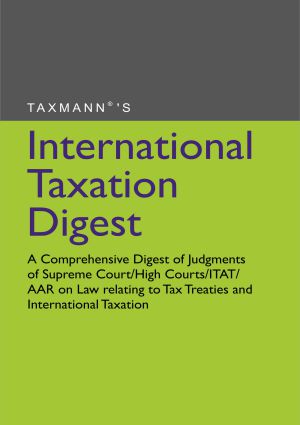TRANSFER PRICING: MEANING & OBJECTIVE
- Blog|Transfer Pricing|
- 3 Min Read
- By Taxmann
- |
- Last Updated on 17 March, 2021
What is Transfer Pricing in India?
Arm’s Length Principle Applied to Transfer Pricing And Attribution of Profits to PE:
The arm’s length principle is applied both in the context of transfer pricing and attribution of profits. Such an application makes no distinction between a branch or a subsidiary through which an MNE carries on business in a country. A functionally separate entity approach as a working hypothesis underlying the application of the arm’s length principle, is found in almost all tax treaties.
Transfer Price is Not Arm’s Length Price:
Transfer price is the price charged in a transaction. The term ‘transfer price’ is used to describe the actual price charged between the associated enterprises in an international transaction. Transfer pricing issues arise when entities of multinational corporations resident in different jurisdictions transfer property or provide services to one another. These entities do not deal at arm’s length and, thus, transactions between these entities may not be subject to ordinary market forces. Where the transfer price is different from the price which would have been charged if the enterprises were not associated and the difference gives rise the tax advantage, the tax is calculated on the basis of arm’s length price.
Aims & Objective Of Transfer Pricing:
1. Transfer pricing minimizes the tax burden or arranging direction of cash flow:
Transfer price, as aforesaid, refers to the value attached to transfer of goods, services, and technology between related entities such as parent and subsidiary corporations and also between the parties which are controlled by a common entity. Its essence being that the pricing is not set by an independent transferor and transferee in an arm’s length transaction. Transaction between them is not governed by open market considerations.
2. Transfer pricing results in shifting profits:
Whatever the reason for fixing a transfer price which is not arm’s length, the result is the shift of profit. The effect is that the profit appropriately attributable to one jurisdiction is shifted to another jurisdiction. The main object is to avoid tax as also to withdraw profits leaving very little for the local participation to share. Other object is avoidance of foreign exchange restrictions.
3. Shifting of Profits- Tax avoiding not the only object:
Transfer between the enterprises under the same control and management, of goods, commodities, merchandise, raw material, stock, or services is made at a price which is not dictated by the market but controlled by such considerations such as: • To reduce profits artificially so that tax effect is reduced in a specific country; • To facilitate decentralization of production so that efforts are directed to concentrate profits in the State of production where there is no or least competition; • To remit profits more than the ceilings imposed for repatriation; • To use it as an effective tool to exploit the fluctuation in foreign exchange to advantage.
Disclaimer: The content/information published on the website is only for general information of the user and shall not be construed as legal advice. While the Taxmann has exercised reasonable efforts to ensure the veracity of information/content published, Taxmann shall be under no liability in any manner whatsoever for incorrect information, if any.

Taxmann Publications has a dedicated in-house Research & Editorial Team. This team consists of a team of Chartered Accountants, Company Secretaries, and Lawyers. This team works under the guidance and supervision of editor-in-chief Mr Rakesh Bhargava.
The Research and Editorial Team is responsible for developing reliable and accurate content for the readers. The team follows the six-sigma approach to achieve the benchmark of zero error in its publications and research platforms. The team ensures that the following publication guidelines are thoroughly followed while developing the content:
- The statutory material is obtained only from the authorized and reliable sources
- All the latest developments in the judicial and legislative fields are covered
- Prepare the analytical write-ups on current, controversial, and important issues to help the readers to understand the concept and its implications
- Every content published by Taxmann is complete, accurate and lucid
- All evidence-based statements are supported with proper reference to Section, Circular No., Notification No. or citations
- The golden rules of grammar, style and consistency are thoroughly followed
- Font and size that’s easy to read and remain consistent across all imprint and digital publications are applied

%20Title%202019_L.jpg)





 CA | CS | CMA
CA | CS | CMA



Comments are closed.